Understand your business like never before
Wallboards, reports and value-added features are vast and varied, providing maximum scope to customize our service to your exact needs – whether you’re a small business or running several contact centers in multiple locations.
Comprehensive call management and analytics
Continuously improve your quality of service
Optimize resources and costs
Deliver outstanding customer service

Analyze and optimize with maximum visibility and control
- Historic call logging and reporting
- Cradle-to-grave call visibility
- Trend analysis by timeframe
- Scheduled reporting
- Real-time call analytics
- Abandoned call recovery
- Monitor extension activity
- Call control
- Wallboard mobile app
- Extension BLF view
- Alarms for key performance metrics
- Wallboard (mobile & desktop)
- Analysis by hunt group
- ACD statistics
- ACD agent blf view
- Status analytics for DND
- Calls by account code statistics
- Call recording plug-in
Frequently Asked Questions (FAQ)
What are the best call center analytics tools?
Customers are often interested in comparing and reviewing top tools available in the market to help them make informed decisions. The best call center analytics tools offer comprehensive features such as real-time and historical reporting, customizable dashboards, integration with CRM systems, and advanced data visualization. Examples of leading tools include BluIP, which provides extensive analytics capabilities.
When evaluating these tools, consider factors such as ease of use, scalability, integration options, and customer support.
How can I improve call center reporting?
Enhancing call center reporting involves implementing strategies and tools that provide detailed insights and comprehensive reports on call activities. Start by adopting a robust call analytics platform that offers both real-time and historical data analysis. Utilize customizable dashboards and wallboards to visualize key metrics and trends. Regularly review these reports to identify areas for improvement, such as reducing call handling times or increasing first call resolution rates. Additionally, integrating your call center analytics with other business systems like CRM and workforce management tools can provide a holistic view of performance and drive further improvements.
What features should I look for in call center analytics software?
When selecting call center analytics software, look for essential features that cater to your specific needs.
Key features include:
- Real-Time Analytics: Immediate insights into call center performance.
- Historical Call Logging: Access to past call data for trend analysis.
- Trend Analysis: Ability to identify patterns over time.
- Integration Capabilities: Seamless integration with CRM, ERP, and other business systems.
- Comprehensive Reporting: Detailed reports on various metrics such as call volume, average handle time, and agent performance.
- Customizable Dashboards: Personalized views to monitor key performance indicators (KPIs).
- Scalability: Capability to grow with your business needs.
- User-Friendly Interface: Easy-to-use platform for quick adoption by your team.
How can call center analytics improve customer service?
Call center analytics can significantly enhance customer service by identifying patterns and trends that help optimize customer interactions. By analyzing call data, you can uncover insights such as peak call times, common customer issues, and agent performance metrics. These insights allow you to make data-driven decisions to improve service quality, such as scheduling more staff during busy periods or providing additional training to agents on frequently asked questions. Additionally, real-time analytics can help monitor ongoing interactions, enabling supervisors to intervene when necessary to ensure a positive customer experience.
What is real-time call analytics?
Real-time call analytics involves monitoring and analyzing call data as it happens, providing immediate insights that help make quick, informed decisions. This feature allows call center managers to track key metrics like call volume, average wait time, and agent availability in real time. With real-time analytics, you can identify and address issues as they arise, such as reallocating resources to handle increased call volumes or assisting agents who are struggling with complex customer inquiries. This proactive approach ensures a higher level of service and efficiency within the call center.
How can we reduce call center operational costs with analytics?
Analytics tools help in identifying inefficiencies, optimizing resource allocation, and improving operational processes, which collectively reduce operational costs. By analyzing call data, you can pinpoint areas where resources are being underutilized or wasted, such as overstaffing during low call volume periods or excessive call transfers. Implementing analytics-driven insights can lead to better scheduling, reduced call handling times, and improved first call resolution rates, all of which contribute to lower operational costs. Additionally, analytics can help identify opportunities for automation, further reducing the need for manual intervention and associated costs.
Can call center analytics software integrate with CRM systems?
Yes, many call center analytics tools offer integration capabilities with CRM systems, providing a seamless flow of information and a unified view of customer interactions. Integrating call analytics with your CRM system allows you to link call data with customer profiles, providing a comprehensive view of each customer’s history and preferences. This integration enables more personalized and efficient service, as agents can access relevant information quickly during customer interactions. Moreover, it enhances reporting capabilities by combining call metrics with customer data, offering deeper insights into customer behavior and call center performance.
What are the benefits of using cloud-based call center reporting tools?
Cloud-based solutions offer flexibility, scalability, and cost savings, as well as the ability to access data from anywhere with internet connectivity.
Key benefits include:
- Flexibility: Easily scale up or down based on your business needs without significant capital investment.
- Accessibility: Access call center data and reports from any location, supporting remote and distributed teams.
- Cost-Effectiveness: Reduce upfront costs and ongoing maintenance expenses associated with on-premises systems.
- Automatic Updates: Benefit from regular software updates and new features without downtime or additional costs.
- Disaster Recovery: Enhanced data protection and disaster recovery capabilities provided by cloud service providers.
How can call analytics help in recovering abandoned calls?
Call analytics tools can track and analyze abandoned calls, helping devise strategies to recover them and improve customer engagement. By identifying patterns in abandoned calls, such as peak times or common reasons for abandonment, you can take steps to address these issues. For instance, you might increase staffing during high-volume periods or implement automated callback options to reduce abandonment rates. Additionally, analytics can help you prioritize follow-up with customers who abandoned calls, ensuring they receive timely responses and improving overall satisfaction.
What are the key performance metrics to track in a call center?
Important metrics include:
- Average Handle Time (AHT): The average duration of a call, including hold time and after-call work.
- First Call Resolution (FCR): The percentage of calls resolved on the first contact.
- Call Abandonment Rate: The percentage of calls terminated by the caller before reaching an agent.
- Customer Satisfaction Score (CSAT): A measure of customer satisfaction based on post-call surveys.
- Agent Performance Statistics: Metrics such as call volume handled, average response time, and quality of interactions.
- Service Level: The percentage of calls answered within a specified time frame.
- Occupancy Rate: The percentage of time agents spend handling calls versus available time.
- Queue Time: The average time callers spend waiting in the queue before being answered.
- Tracking these metrics helps you identify areas for improvement, optimize call center operations, and ensure high levels of customer satisfaction.
Share to social media

Transforming Healthcare Communication: How AFMC Improved Efficiency with BluIP and NICE

Exploring How AI Enhances Call Center Solutions

Can a Cloud Contact Center Improve Customer Experience?

Why Businesses are Turning to UCaaS Providers for Scalability


